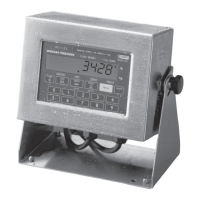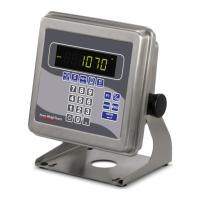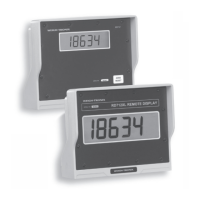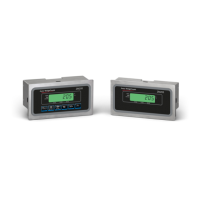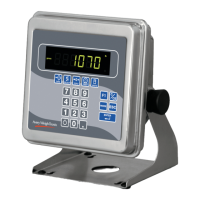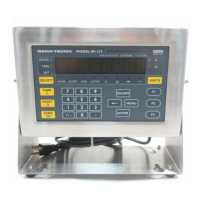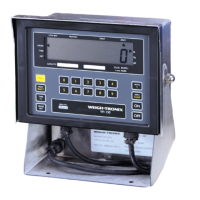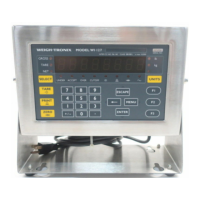Do you have a question about the Avery Weigh-Tronix WI-125 and is the answer not in the manual?
Describes the three operating modes: operations, test, and configuration.
Explains how to physically seal the unit using a sealing wire and screws.
Identifies and explains the functions of the WI-125 keyboard buttons.
Steps to enter the configuration menu, including security bypass.
Setting scale capacity, division size, and enabling/disabling units of measure.
Covers settings for zero range, motion detection, update rates, and angle sensors.
Setting security codes, clock/calendar modes, and print button functions.
Configuring serial port settings, baud rates, parity, and print layout.
Customizing the physical arrangement and content of printed information.
Understanding ASCII strings and control codes for custom print commands.
Diagram illustrating the layout submenu structure and options.
Steps to enter configuration mode to calibrate the system.
Adjusting trim and balance potentiometers for accurate weighing.
Respanning the indicator for accurate weight readings when out of tolerance.
Step-by-step guide for acquiring 16 data points for system calibration.
Formula and tables to calculate net lifting capacity with attached scale.
Detailed steps for disassembling and reassembling for transducer replacement.
Procedures for loosening and tightening tensioner set screws.
How to perform a master clear or reset the indicator to default settings.
Using the test menu to diagnose indicator functions and components.
Explanations for VERSION, DISPLAY, BUTTONS, A to D, ANGLE, and SERIAL tests.
Troubleshooting steps for indicator power, readout, and lockup problems.
Resolving printer shutdown, center dashes, and 88888s display errors.
Diagnosing and fixing issues causing weight drifting or repeating measurements.
Addressing 0000s or 9999s errors after calibration data fitting.
Performing resistance checks to test the weigh bars and connectors.
Instructions for switching to a new J-box and modifying weighbar connections.
| Material | Stainless steel |
|---|---|
| Tare Function | Yes |
| Auto Power Off | Yes |
| Overload Protection | Yes |
| Display | LCD |
| Power Supply | AC Adapter or 6 x AA Batteries |
| Operating Temperature | -10°C to 40°C |
| Units of Measurement | kg, lb |
